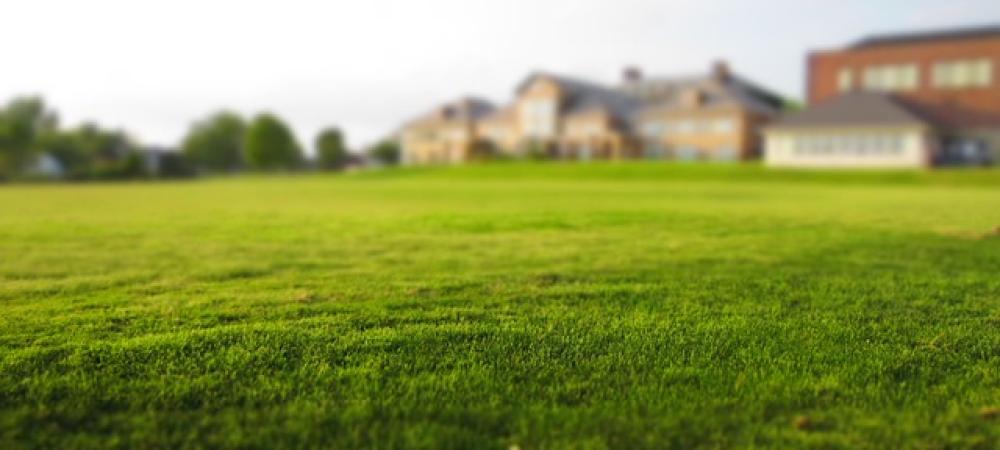What to Expect with a New Lawn

New lawn installation or replacement in Northeast Ohio requires specific care.
People often ask for our help when they have a new lawn. Maybe you just moved in, starting from scratch, or your old lawn was tired and it was time to replant. Either way, your new lawn needs special care, and we’re here to help!
My lawn was recently planted; what should I expect?
Just like people, your lawn needs the proper nutrients to grow and stay healthy. Replenish nutrients with regular feedings and care. Think of your lawn as an infant. When it’s new, it needs plenty of special attention. In the second year, it fills in, and you start enjoying it more. Sometimes there are still issues like weeds and brown areas, like an adolescent teen. You’ll be proud in the third year and love it like your grown children!
Watering Tips
The greatest success comes when we work as a team; your part is critical! Water your lawn for about 20 minutes every other day in the morning. Hot, dry weather means it needs more; if it’s cool, you can water a little less. Check out our blog on water tips for your lawn to learn more!
Mowing Tips
When you mow, set your mower to the tallest setting except for the first and last mowing of the year. A taller grass blade shades the “crown” of the plant, where it comes out of the soil. When the crown is stressed, the grass turns brown. So, you’ll have a thicker, greener lawn with fewer weeds by mowing tall. Learn more about lawn mowing best practices!
By the way, edges are especially vulnerable to damage from cutting too short. Heat radiates from walks and drives, weakens the grass, and weeds come right in!
I’m considering planting a new lawn…
In planning for a new lawn, there are several steps to consider: What’s the soil like? Is your yard sunny or shady? Flat or sloped? How will you use it? Should I plant in spring or wait until fall? Will the kids be using it as a playground? Is a perfect showplace lawn your passion?
The Best Time To Plant A New Lawn
If possible, plant in mid-September. Why? Because there’s good growing weather for the seed to germinate, followed by two cool, wet seasons before next year’s hot, dry summer. We’ll be able to feed it a few times before winter, which builds density so that weeds will be less of a challenge next year. Many people plant in spring, and that’s the second-best time compared to mid-summer. Weeds germinate in spring and compete with your new lawn. Keeping weeds at bay while nurturing the new grass can be challenging. As spring turns to summer, the tender new seed may be damaged while controlling the weeds, so we may tolerate some weeds until cooler fall weather.
Planting Lawn in New Construction
See all those rocks and gravel? Remove all the construction debris before planting. Think of that soil as the growing medium for your new lawn—add organic matter and starter fertilizer and incorporate it into the top 6” before planting.
Replacing an Existing Lawn in Northeast Ohio
There are lots of reasons to replace your current lawn. Insects, drought, age, or maybe weedy grasses like creeping bentgrass invaded, and it’s time to start fresh. Planning will pay big dividends for the best results. If you’re replacing your lawn because bugs or drought damaged it, what’s your plan for water and managing the insects? Often, people replace their lawn when it’s overrun by bentgrass. If that’s your situation, you’ll need to kill the original lawn first, starting with a clean slate. Even then, it will come back—we’ll help by explaining your options.
Water Techniques
Will you use an irrigation system or water manually? Small, irregularly shaped areas are harder to water, and an efficient, convenient irrigation system saves you money. Now is the best time to have it installed. Your new lawn needs water. You’ll need to keep the soil moist until the seed is 2” tall. That can take three weeks. How much water is necessary to do that? That depends on the weather. Moist soil clumps in your hand and doesn’t drip. Don’t overwater, and we don’t want it to dry out either.
Once it’s 2” tall, you can reduce water to 20-30 minutes every other day. Water is most efficient in the morning because it soaks into the soil before the mid-day sun evaporates. Avoid evening watering because we don’t want the grass blades wet overnight (that fosters diseases that are expensive to control). These are guidelines you can adjust as needed. Hot weather dries the soil faster, so you’ll need to water more. If it’s cool and rainy, you can water less.
Seeding Your New Lawn
What kind of seed? All grass seed is not the same, and you’ll want to be paying attention here. Seed mixes are often blended to improve heat, drought, insect, and disease tolerance. In sunny areas, we suggest a blend of “turf type tall fescue,” while shady areas would include “creeping red or chewings fine fescue.”
At Ecolawn, we’re here to help you with your lawn. Have questions? Call 440-953-9100 or contact us today for your complimentary, on-site consultation.
FOLLOW US FOR MORE LAWN CARE TIPS
Complimentary Consultation
"*" indicates required fields

